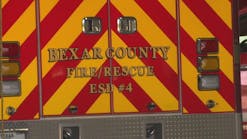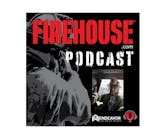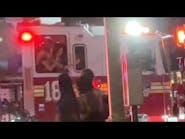The International Association of Fire Chiefs (IAFC) paper Taking Responsibility for a Positive Perception, (http://www.iafc.org/files/1DEPTadmin/TakingResponsiblity4PositivePublicPerception.pdf), issued earlier this year, highlights the marketing challenges facing the fire service and the “spiral effect” of public scrutiny: financial security, budget cuts, antagonistic debate, defensive posture and behavior scrutiny. This public observation keeps us “under the microscope.”
The good news is that who we are and what we do is there for all to see. Now, this could be our worst nightmare if we approach it from a defensive position, especially when it comes to firefighter behavior and fire officer leadership. If, however, we approach this reality with a strategy and strong, supportive leadership at all levels, these marketing challenges become major opportunities. It can grow into a dynamic force for all public services, but especially those that are literally in every neighborhood in the country and close proximity to our citizens: the fire service.
Back to the beginning
In 2010, one of the great American marketing academics, Philip Kotler, in collaboration with Hermawan Kartajaya and Iwan Setianwan, wrote the book Marketing 3.0: From Products to Customers to the Human Spirit (published John Wiley and Sons Inc.).While the essence of the book has broad application to the private sector, the real opportunity lies in how public services can use the shifting marketing paradigm to achieve some of the goals outlined in the IAFC paper. The basis of my comparison is that if we look at how fire service marketing has progressed, we can see how it has matched the progression of marketing in the private sector.
The origins of fire protection were based on the delivery of one product: fire suppression. We rescued those in danger and saved property by confining and extinguishing the fire. Simply stated, people called us and we did the job. As time passed, we learned from what has been called “the catastrophic theory of enhanced protection.” We dealt with enough horrific fires and loss of life that we began to progress from fire suppression and life safety to an expansion of the service: comprehensive prevention. This expanded our service to include the key areas of prevention: engineering, code enforcement, inspection and public education.
One of the next major progressions in the extension of our service was aggressive emergency medical intervention and support. Over the past few years, with the apparent frequency and severity of natural disasters, we have seen the growth of emergency management. This is yet another extension of our service and another chance to work with the public to demonstrate professional behavior to our citizens in a real time of need and concern, both before and after the incident. (This is especially true in the urban/wildland interface.) It gives us the opportunity to broaden our working relationships with other agencies, further demonstrating our value. Of course, all of this is dependent on our behavior and our integrity in the eyes of these agencies and our citizens.
The progression of our services
Marketing 3.0 notes the progression of marketing from “products to customers to the ‘human spirit.’ ” The book notes that Marketing 1.0 was transactional, the key concept being product development and sales in a one-to-many transaction. This is product-centric marketing, as in, “We make it and you buy it.” The similarity to the fire service would be, “You call us and we put out the fire and save your life.” This was a purely functional approach to our business.
Marketing 2.0 dealt with the need to position a product or service, as well as the corporation, by speaking to the mind and heart of the individual. Information technology and knowledge create a better-educated consumer. We see consumer-oriented, one-to-one marketing and the attempt to understand what the consumer needs. We see the growth of brand development and the many ways to create a dialogue with the consumer. The similarity in the fire service would be a focus on citizen care at the incident (especially care for valuables and integrity of the building after the fire), public fire education, emergency medical services and disaster preparedness. We begin to see a desire from the fire service to understand that marketing may be helpful to the fire service beyond visibility at an incident and a good public information officer. We are probably at this phase now, but being forced very quickly into the next phase of fire service marketing.
Social media
Now let’s look at Marketing 3.0 and the opportunity for the fire service in light of the critical need for a national strategic marketing/public affairs plan, coupled with local strategies and tactics. The purpose of both is to grow the perception of the fire service to an unassailable position. The IAFC paper is a great initial platform.
As social media become increasingly expressive, people are better able to influence other people – locally in your own jurisdiction, nationally and globally – with opinions and experiences. Kotler notes that trust exists more in horizontal rather than in vertical relationships, meaning that people believe more in one another than they believe in companies or organizations. The rise of social media is a reflection of the move from consumers’ trust in other people rather than companies or organizations.
According to a 2009 Nielsen Global Survey, fewer consumers rely on company-generated advertising. Increasingly, they turn to word-of-mouth as a form of advertising they can trust. Around 90% trust recommendations from people they know, while 70% believe opinions posted online. Kotler notes that Trendstream/Lightspeed research shows that consumers trust strangers in their social network more than they trust experts. This could be an opportunity for the fire service, especially in establishing credibility and safety messages. Why? It is non-threatening and we are not selling anything but our citizens’ safety. We can be the experts in this non-threatening way.
The influence of corporate advertising and what we say about ourselves in the fire service will continually diminish. Social media are low cost and can appear to be bias-free compared to what we say. That is why behavior and integrity become so important. Imagine if a citizen perceives a firefighter engaging in unprofessional behavior and then writes about it on a blog. What if it isn’t true? How do we deal with that? The best way is to have a values-based department with strong supportive leadership endorsing the true image of the firefighter as a leading force in all areas of public safety. Kotler notes that citizens are seeking admirable characters outside their communities. They are skeptical because they know good characters are scarce., but once they find them, they instantly become loyal evangelists.
Who owns our brand?
The basis of Marketing 3.0 confirms that we no longer own the brand “fire department.” The citizens own it. Social media have put the brand into the hands of the citizens we want to support us. Marketing 3.0 is based on actual value, certainly financial, but especially human. This value equation is the key to our sustainably – our ability to understand and join the social media conversation. This still must be coupled with the local and national media to craft our story and tell it well.
We are entering a values-driven era of marketing. We can now couple the emotional loyalty and branding of the fire service with value-based, human-spirit marketing. Instead of dealing with people as consumers and “the public,” we need to see them as individuals with minds, hearts and spirits. Who else sees this every day but the firefighter?
When we arrive at an incident, especially with families and children in harm’s way, we think of our own families. We are in a special position to understand marketing that involves the human spirit. Kotler notes that people are searching for organizations and companies that address their deepest needs for social, economic and environmental justice in their mission, vision and values. Our citizens and consumers are searching for us! The mission, vision and values of the fire service have always reflected Marketing 3.0. The question now is what should our strategy be as we move forward?
Actions we can take now
The Vision 20/20 Project (http://www.strategicfire.org/) has been at the forefront of progressive change in the fire service. In fact, Vision 20/20’s tagline is “bridging the gap from yesterday to tomorrow.” Five key strategies have been developed through gap analysis over the last five years. The strategies are: fire prevention advocacy, marketing, culture, technology; codes and standards. The platform of Vision 20/20 defines fire service Marketing 3.0, specifically Community Risk Reduction, adopted from a model in the United Kingdom, and that has begun to blossom in jurisdictions around the country through specific training modules.
In a nutshell, Community Risk Reduction establishes in-home inspections with the ability to determine other potential hazards, as well as the well-being of the family and the integrity of the home. Most important, the program establishes collaboration with the community and its people. The result is a one of the most effective values for our marketing. The citizen can become a partner in his or her own safety. The Vision 20/20 initiatives, coupled with the IAFC reputation-management paper, provide an amazing road to ensure the long-term safety of our citizens as well as their financial and political support. The key, of course, is execution. All the resources and tools are now available. Let’s use them to create and sustain our own future as we protect the future of our citizens.
Ben May discusses fire service marketing in his “A Burning Passion” blog at: http://www.firehouse.com/blogs/a-burning-passion.
BEN MAY, a Firehouse® contributing editor, is the Business Development Director for Walt Disney Co. and a consultant to the U.S. Fire Administration, where he teaches courses and lectures on marketing management. May is a graduate of the Public Service Academy in Montgomery County, MD, where he was a volunteer firefighter, and a former fire commissioner for Woodinville, WA, Fire and Rescue. May is a member of the National Fire Academy’s Society of Executive Fire Officers, the Institution of Fire Engineers, the Public Information Section of the Florida Fire Chief’s Association and the Society of Fire Protection Engineers. He is a member of the Steering Committee of Vision 20/20, responsible for social marketing for national fire protection, and the board of the Federal Alliance for Safe Homes. An expanded version of this article is posted on Firehouse.com

Ben May
Ben May is a Board Director of the Center for Public Safety Excellence. A graduate of the Montgomery, MD, Public Service Training Academy, he was a firefighter for Hillandale, MD, Fire and Rescue and fire commissioner for Woodinville, WA, Fire & Rescue. May served as a marketing consultant to Fire Service Publications (IFSTA) of Oklahoma State University’s School of Fire Protection Technology, to the U.S. Fire Administration and to numerous metropolitan fire departments in the creation of strategic marketing communications plans. He is a member of the National Society of Executive Fire Officers and the Institution of Fire Engineers. May holds a bachelor’s degree in public affairs and Russian from the University of Oklahoma and a master’ degree in international communication and Russian from American University.





